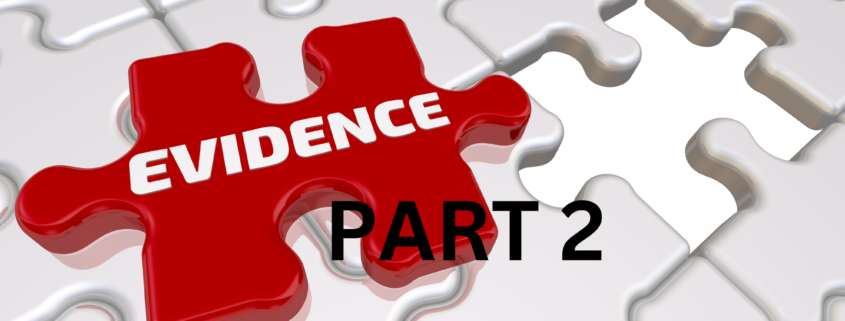Where’s the evidence?! Part 2
In Part 1 I spoke about the price some paradigm shifters such as Ignaz Semmelweis, the Hungarian doctor who dared to suggest that doctors were killing their patients by failing to wash their hands, paid. Without suggesting I was in his league, I gave numerous examples of how people had responded to my paradigm challenging innovations over the last four decades.
Perhaps against better judgement, I continue to share my training conclusions for positive impact by those who embrace them. I say perhaps against better judgements because I receive the same personal attacks and questioning of my sanity as I did four decades ago when I release these ideas, especially the ones that relate to training methods or equipment embraced by the majority.
I naively hope that those threatened by exposure to these suggestions would take some time to check out my track record, however I appreciate I am being unrealistically optimistic.
After all, if Linus Pauling could be subject to such vitriol for his teachings and position in relation to supplemental Vitamin C after he had won two unshared and in two different subject areas Nobel Peace prizes (something no one else has achieved), then who am I to expect a leave pass?
So what do those who make the comment ‘Where’s the evidence?’ (in relation to my audacious suggestions challenging popular training methods and equipment) mean? After all, it shocks me, as I have just shared the rationale in the multiple page article – so what are they referring to when they say ‘Where is the evidence?’
Let’s talk about possible meanings of the word ‘evidence’.
According to dictionary’s:
Evidence is anything that you see, experience, read, or are told that causes you to believe that something is true or has really happened.[1]
one or more reasons for believing that something is or is not true:[2]
Now that cannot be what they are referring to, as surely they would not have asked had they been operating on these versions. I mean, I had just explained to them why based on my four decades of experience I reached that conclusion, yet they still asked ‘Where’s the evidence?’
So I believe they are referring to another type of evidence. Here are two possibilities.
The first one is industry specific. Our industry is one where the need to quote a scientific reference is paramount. Despite being in a field that will always be challenged by the ability to provide ‘scientific’ answers to human adaptations, our industry seems committed on over-compensating.
So one possibility is that they are referring to a randomized double blind placebo controlled study.
Studies follow a hierarchy in terms of the quality of evidence that they can provide. Randomized double blind placebo control (RDBPC) studies are considered the “gold standard” of epidemiologic studies. [3]
There is another form of evidence that I doubt these typically challengers are referring to consciously, however I suggest subconsciously they are looking for – the evidence that ‘the majority’ (or at least a substantial number of people) are doing it also.
I call that conformity evidence.
So I get the rationale of what they are saying – show me the evidence, meaning the randomized double blind placebo controlled study – however there is one more point I will make about this request.
Is this question really driven by a desire to learn, or is it driven by the expectation that the standard cannot be met, and therefore they are safe to keep doing what they are currently doing?
In other words, I suggest that the default ‘where’s the evidence?’; ‘there is no evidence to support that’; is a safe-haven to avoid change, to avoid learning that one may have been off-track or sub-optimal in past beliefs and practices.
I know what you’re thinking…
So where’s the evidence for you saying that Ian?! (Oh I forgot to add the prelude of sentences containing nasty adjectives!)
[Read Part 3….]
[1]https://www.collinsdictionary.com/dictionary/english/evidence
[2]https://dictionary.cambridge.org/dictionary/english/evidence



